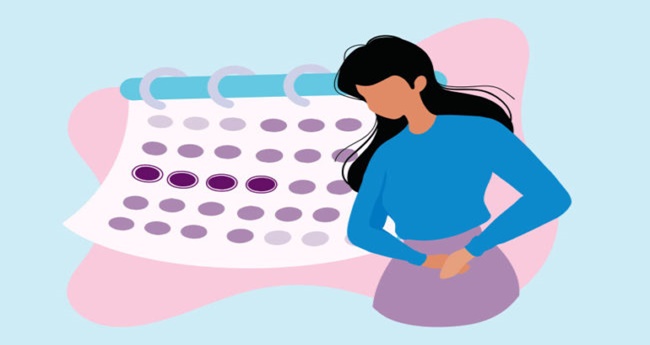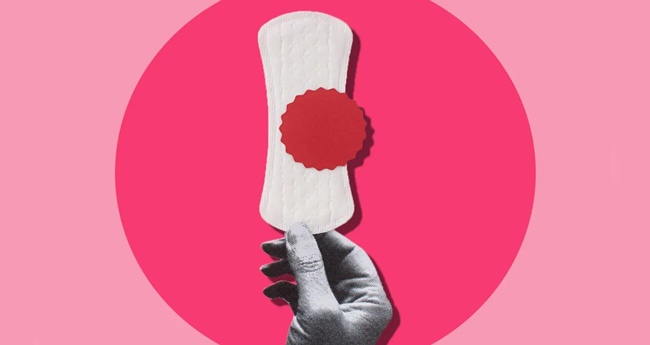These are the Ways on How to Ease the Period Cramps Pain During Menstruation Period
Period cramps and how to get rid of it or ways to control the pain during menstruation period every month.
Every year more than half of women who menstruate endure period pain (dysmenorrhea) for over one to two days. Before and during their periods, many women experience menstrual cramps. Some ladies may only find the discomfort irritating.
Based on the Health Partners, while period pain can induce headaches or general discomfort, it is usually triggered by period cramps. When your uterus contracts to lose its lining, also known as the uterine lining, you get menstrual cramps.

This can result in the stomach, lower back, groin, or upper thigh pain. We already discussed when it is appropriate to contact a doctor for menstrual cramps.
Period pain can be caused by a variety of factors, and it’s reasonable to question why if you get painful period on a regular basis. Perhaps you are the only lady in your family who suffers from terrible cramps. Maybe your painful periods didn’t start until your twenties.
Whatever your situation, a doctor can explain why you have unpleasant cramps every month. Here, we’ll discuss the 13 recommended home remedies to get rid of that menstrual cramps.
1. Drink more water
Bloating can be uncomfortable and aggravate period cramps. Drinking water might help minimize bloating and pain associated with your period.
Drinking hot water can also improve blood circulation and calm your muscles. This can help to alleviate cramping caused by uterine contractions.
2. Try Herbal Teas
Certain types of herbal tea have anti-inflammatory and antispasmodic ingredients that can lessen uterine muscle spasms that cause cramping.
Menstrual cramps can be relieved naturally by drinking chamomile, fennel, or ginger tea. Furthermore, some herbal teas may provide additional benefits such as stress relief and assistance with sleeplessness.
3. Eat anti-inflammatory foods
Some foods can provide natural cramp relief while also tasting delicious. Anti-inflammatory foods can aid in blood flow and uterine relaxation. Consume berries, tomatoes, pineapples, and spices such as turmeric, ginger, and garlic. Inflammation can also be reduced by eating leafy green vegetables, almonds, walnuts, and fatty fish like salmon.
4. Avoid Sweets
While a brownie or fries may sound appealing, foods heavy in sugar, trans fat, and salt can induce bloating and inflammation, exacerbating muscle soreness and cramping. Grab a banana or another piece of fruit to satisfy your sugar needs or unsalted almonds for something more flavorful.
5. Reach for decaf coffee
Caffeine causes blood vessels to constrict. This can cause your uterus to tighten, making cramps more unpleasant. If you must have coffee during your period, go to decaf. If you rely on caffeine to get you through the afternoon slump, try eating a high-protein snack or going for a brisk 10-minute stroll.
6. Try Dietary Supplements
Vitamin D can aid in calcium absorption and inflammation reduction. Other supplements, including omega-3 fatty acids, vitamin E, and magnesium, can help reduce inflammation and may even make your periods less uncomfortable.
According to the article, you must take vitamins every day, not just during your period, for the best results. Also, because certain supplements interfere with medications, consult your doctor before beginning any new regimen.
7. Apply Heat
A little heat can help relax your muscles, increase blood flow, and relieve tension. Sit with a heating pad, take a hot shower, or soak in a hot bath.
8. Exercise
Exercise may be the last thing on your mind if you’re in pain. However, even light activity releases endorphins, which make you joyful, alleviate pain, and relax your muscles. Yoga, gentle stretching, or walking for fifteen minutes may be all you need to feel better.
9. Reduce Stress
Cramps can be exacerbated by stress. Use stress-relieving practices such as meditation, deep breathing, yoga, or your own preferred method. If you don’t know how to relax, try guided visualization.
Simply close your eyes, take a deep breath, and visualize a peaceful, safe environment that is meaningful to you. Stay in this space for at least a few minutes, taking calm, deep breaths.
10. Try massage therapy
Massage therapy was reported to considerably lessen menstrual discomfort in women with endometriosis in one research. Massages can help to relieve uterine spasms by relaxing the uterus.
Massage therapy should focus on the abdomen area to successfully manage period cramps. However, a full-body massage that relieves stress may also assist to relieve period cramps.
11. Take over-the-counter (OTC) medicines
Muscle contractions and discomfort can be caused by the hormone prostaglandin. Anti-inflammatory medications, such as ibuprofen, can provide immediate relief by lowering the number of prostaglandins in your body. Only take OTC medications when you begin to feel cramps for the best results.
12. Try alternative medicine
Alternative health treatments such as acupuncture and acupressure have helped some people. Acupuncture is a method of stimulating the body by inserting needles into the skin.
Acupressure stimulates the body without needles by exerting pressure on various places of the body. These techniques can assist you in relaxing, releasing muscle tension, and improving blood flow throughout your body.
13. Start hormonal birth control
If cramps are caused by a hormonal imbalance, birth control can alleviate them. Balanced estrogen and progesterone levels help thin the uterine lining, allowing it to shed more easily.
Hormonal birth control also controls the length and frequency of your menstrual cycle. Some birth control methods can entirely eliminate period discomfort by stopping your menstruation.
Consult your OB-GYN about birth control methods such as the pill, birth control shot, or hormonal IUD. Then you’ll be able to select the finest type of birth control for you.

These tips may help you but if you still have menstrual cramps you can consult the OB-GYN to ensure your safety and ask for medicine that suit in your condition.
You may also visit: Every Woman Needs To Avoid These Things During Period
